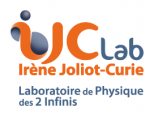Back to the main page of the topic Chemistry of f elements in aqueous media and ionic liquids
Applications :
Databases and modeling. The release into the environment of highly toxic actinides and other radionuclides as a consequence of nuclear accidents, weapon tests and waste processing/disposal all contribute to the radioactive contamination of soils and surface water. Knowledge of radionuclide transport in the environment is crucial, not only for fundamental geochemistry, but for assessing the risk posed by long-term storage of nuclear waste. The environmental impact strongly depends on the mobility of a given radionuclide in environmental aquatic systems. The interaction of radionuclides with a natural organic matter is of particular interest. Complex equilibria with organic species present in the aqueous phase play an important role in the eventual dispersion of radionuclides. The formation of such complexes typically causes significant changes in their migration properties in the environment. Here we are interested in a speciation of a number of actinide (U(IV), Th(IV), Pu(IV)), lanthanide (Eu(III), Ce(IV)) and major interfering cations (Fe(III), Al(III)) with the organic ligands, like hydroxamic acids (they belong to the group of the natural substances of siderophores), simple short chain organic acids (they can be used as the simple models of complicated natural organic matter) etc. These data can be used for modelling the radionuclide behavior in the environment (soil, water…) and they can enter the data base compilation (NEA, for example).
Instrumentation. The studies of complexation of the d- and f- elements with hydroxamic acids help us to obtain information on thermodynamic, kinetic and structural properties of complex species formed with U(IV), U(VI), Th(IV), Zr(IV) and Pu(IV). This data can help to create DGT (diffusive gradient film) sensors for metal ion monitoring. The DGT devises are used for in situ passive sampling (concentration) of trace metals in the environment. For the moment, there is no specific DGT able to discriminate different tetravalent species (An(IV)) from di- or trivalent transition metals. For this purpose, we wish to find the optimal chelators and to study their chelation properties with ions cited above. These chelators should exhibit very high binding affinity and selectivity towards the tetravalent elements at the pH values of natural waters, over all other metals.
Medical applications. One of the most important applications of data on speciation of lanthanide ions with hydroxamic acid ligands is a medical application. Needs in new isotopes are growing, not only in order to increase the possibilities of imaging/therapies, but also to better personalize treatments. In order to consider in a longer term the vectorization of radionuclides towards organs to be treated/imaged, this project addresses also the chelation of lanthanide ions, on the first turn, Tb(III), as interesting appealing and emerging “theranostic” (THERApeutic and DiagNOSTIC) ion, which offers 4 clinically interesting radioisotopes with complementary physical decay characteristics. DOTA derivatives are currently widely used in medicine as chelators for Ln(III) ions, forming extremely stable and inert complexes. However, their full encapsulation by this macrocycle is extremely sluggish and involves several low-stability intermediates able to partially dissociate in vivo. Thus, the use of new hydroxamic acid ligands is proposed to overcome these obstacles.
Energy production. The change of ion speciation in redox couples of f- and d-elements (Eu(III)/Eu(II), Ce(IV)/Ce(III), Fe(III)/Fe(II)…) in aqueous and ionic liquid media can change the properties of the thermogalvanic cell. A thermogalvanic cell employs a heat to provide the electricity. To find the most efficient and cheapest redox couple with the appropriate complexing environment is the aim of this project. This knowledge can help to create robust devices (thermoelectrochemical-generator) that are capable of producing electricity from external heat flux. The target performance of such devices is expected to surpass the state-of-the art liquid thermoelectric modules with an added value of being cost-effective, non-toxic, relatively lightweight, and scalable in size. The future application is focused primarily on the waste-heat recovery to produce electricity at small scales (from few Watts to 100 W) either in remote (portable) settings or in conjunction with a larger power generation source (e.g., concentrated solar power plants). These thermoelectrochemical generators can be used as the energy supply units for power wireless sensors in nuclear plants or nuclear waste repositories and also as cogeneration systems to improve the efficiency of nuclear power plants.





